Research was a Priority for the Founder of Structural Integration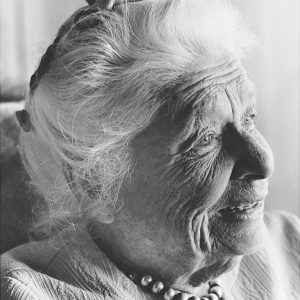
Dr. Ida P. Rolf (IPR) was an associate professor at Rockefeller Institute (now Rockefeller University) in New York City after receiving her Ph.D. in biological chemistry from the College of Physicians and Surgeons of Columbia University in the 1920s.
IPR had a committed focus on peer-reviewed evidence. She used visual evidence to communicate the changes made by a Structural Integration 10-series, and had photographers meticulously capture the natural posture of the clients before the 10-series and after the 10-series.
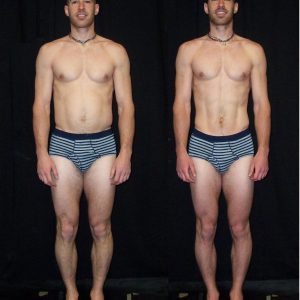
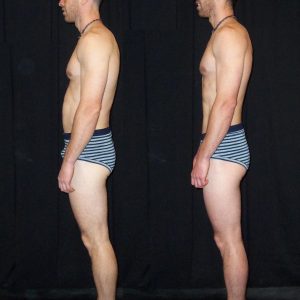
Rolfers™ are trained to observe these individual differences in three-dimensional anatomy based upon anatomy, physiology, and IPR’s detailed descriptions of the human structure.
Today, Rolfers™ use clinical markers as indicators of success in their treatment rooms. This includes visual evaluation of gait, posture, ranges of motion for joints, spinal curves, alignment of major segments of the body, etc., as well as self-reporting on daily activity levels, pain levels, sleep quality, emotional reactivity, trauma states, etc.
Below is just some of the research articles and published works about Rolfing® Structural Integration. We also recommend the Fascia Research Congress for even more peer-reviewed work and contemporary ideas about recovery mechanisms with Structural Integration as the manual therapy intervention.
IPR publications:
Rolf, I.P. Structural Integration. Journal of the Institute of Comparative Study of History Philosophical Sciences, 1(1):3-19. 1963.
Rolf, I.P. Structural Integration. A Contribution to the understanding of stress. Confinia Psychiatrica, 16(2):69-79. 1973.
IPR books:
![Rolfing and Physical Reality by [Rolf Ph.D., Ida P.]](https://images-na.ssl-images-amazon.com/images/I/51nsV2il01L.jpg)
Rolfing and Physical Reality
by Ida P. Rolf Ph.D.
1978

Rolfing: Reestablishing the Natural Alignment and Structural Integration of the Human Body for Vitality and Well-Being
by Ida P. Rolf Ph.D.
1977
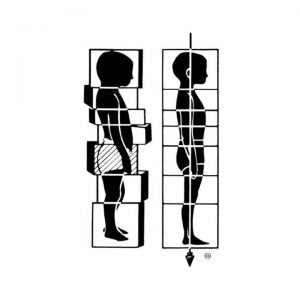
Current Peer-Reviewed Articles
STRUCTURAL INTEGRATION
Author: Jacobson, E.
Author: Jacobson, E.
(3) Cell Biology Meets Rolfing (2007). Science Magazine, 318, 1234-1235.
Author: Grimm, D.
Author: Myers, T. W.
Author: Myers, T. W.
Author: Myers, T. W.
FASCIA RESEARCH
Authors: Findley, T., Chaudhry, H., & Roman, M.
Authors: Simmonds, N., Miller, P., & Gemmell, H.
Authors: Schleip, R., Naylor, I.L., Ursu, D., Melzer, W., Zorn, A., Wilke, H.J., Lehmann-Horn, F., & Klingler, W.
Authors: Schleip, R., Klingler, W., & Lehmann-Horn, F.
Author: Schleip, R.
Author: Schleip, R.
CHRONIC PAIN
Authors: Deutsche, J. E., Derr, L. L., Judd, P., & Reuven, B.
BALANCE
Authors: Findley, T., Quigley, K. Maney, M., Chaudhry, H., & Agbaje, I.
FIBROMYALGIA and CHRONIC FATIGUE
Authors: Courtois, I., Cools, F., & Calsius, J.
Author: Segarra, K. B.
Authors: Stall, P., Hosomi, J.K., Faelli, C.Y.P., Pai, H.J., Teixeira, M.J. & Marchiori, P.E.
Authors: Stall, P. & Teixeira, M. J.
CHRONIC NONSPECIFIC LOW BACK PAIN
Authors: Jacobson, E. E., Meleger, A. L., Bonato, P., Wayne, P. M., Langevin, H.M., Kaptchuk, T. J., & Davis, R. B.
BODY IMAGE AND BACK PAIN
Authors: Baur, H., Gatterer, H., Hotter, B., & Kopp, M.
STRESS AND TRAUMA
Authors: Payne, P. & Crane-Godreau, M. A.
PERFORMANCE TRAINING
Editorial (2015). Theatre, Dance and Performance Training, 6(2): 125-129.
Author: Worth, L.
CERVICAL SPINE INTERVENTION
Authors: James, H., Castaneda, L., Miller, M. E., & Findley, T.
CEREBRAL PALSY
Authors: Price, K. S., Buysse, C.A., Loi, E. C., Hansen, A. B., Jaramillo, T. M., Pico, E. L., & Feldman, H. M.
Authors: Loi, E. C., Buysse, C. A., Price, K. S., Jaramillo, T. M., Pico, E. L., Hansen, A. B., & Feldman, H. M.
Authors: Hansen, A. B., Price, K. S., & Loi, E. C.
Authors: Hansen, A. B., Price, K. S., & Feldman, H. M.
AUTO-IMMUNE CONDITIONS
Author: Ball, T. M.
ATTITUDES TOWARD COMPLEMENTARY AND ALTERNATIVE MEDICINE (CAM)
Authors: Chaterji, R., Tractenberg, R. E., Amri, H., Lumpkin, M., Amorosi, S. B. W., & Haramati, A.
AMPUTATION
Author: Foster-Scott, D.
RHEUMATOID ARTHRITIS
Unwinding the Pattern of Rheumatism (2015). IASI Yearbook of Structural Integration, p 64 – 69.
Author: Randall, A.
SCAR TISSUE
Authors: Wheeler, S. L., Blessitt, K. L., & Ennis, R. D.
AMYOTROPHIC LATERAL SCLEROSIS (ALS)
Authors: Cottingham, J. T. & Maitland, J.

Current Books
 Fascial Release for Structural Balance
Fascial Release for Structural Balance
2017
By: James Earls & Thomas Myers
 The Body Remembers Volume 2: Revolutionizing Trauma Treatment
The Body Remembers Volume 2: Revolutionizing Trauma Treatment
2017
By: Babette Rothschild
![Advanced Myofascial Techniques: Volume 1 by [Luchau, Til]](https://images-na.ssl-images-amazon.com/images/I/512Jj7MVe1L._SX260_.jpg) Advanced Myofascial Techniques
Advanced Myofascial Techniques
2016
By: Til Luchau
Energy Medicine: The Scientific Basis
2015
By: Dr. James L. Oschman

Anatomy Trains: Myofascial Meridians for Manual and Movement Therapists
2014
By: Thomas W. Myers
 The Body Keeps the Score: Brain, Mind, and Body in the Healing of Trauma
The Body Keeps the Score: Brain, Mind, and Body in the Healing of Trauma
2014
By: Dr Bessel van der Kolk

Fascia: The Tensional Network of the Human Body
2012
By: Dr Robert Schleip and Dr Thomas W. Findley

The Polyvagal Theory: Neurophysiological Foundations of Emotions, Attachment, Communication, and Self-Regulation
2011
By: Dr Stephen W. Porges
 When the Body Says No: Understanding the Stress-Disease Connection
When the Body Says No: Understanding the Stress-Disease Connection
2011
By: Dr Gabor Mate
![The New Rules of Posture: How to Sit, Stand, and Move in the Modern World by [Bond, Mary]](https://images-na.ssl-images-amazon.com/images/I/51L6i72PPYL._SX260_.jpg) The New Rules of Posture: How To Sit, Stand, and Move in the Modern World
The New Rules of Posture: How To Sit, Stand, and Move in the Modern World
2010
By: Mary Bond
 In an Unspoken Voice: How the Body Releases Trauma and Restores Goodness
In an Unspoken Voice: How the Body Releases Trauma and Restores Goodness
2010
By: Peter A. Levine, PhD & Gabor Mate MD
 Rolfing Experience: Integration in the Gravity Field
Rolfing Experience: Integration in the Gravity Field
2006
By: Betsy Sise
![The Power of Rolfing: What Rolfing Structural Integration Can Do for You by [Marcus, Owen]](https://images-na.ssl-images-amazon.com/images/I/319RI4tBajL.jpg) The Power of Rolfing: What Rolfing Structural Integration Can Do for You
The Power of Rolfing: What Rolfing Structural Integration Can Do for You
2006
By: Owen Marcus
 The Body Remembers: The Psychophysiology of Trauma and Trauma Treatment
The Body Remembers: The Psychophysiology of Trauma and Trauma Treatment
2000
By: Babette Rothschild

Waking the Tiger: Healing Trauma
1997
By: Dr. Peter A. Levine
 Balancing Your Body: A Self-Help Approach to Rolfing Movement
Balancing Your Body: A Self-Help Approach to Rolfing Movement
1996
By: Mary Bond

Historical Articles from the 20th Century
(1) A Structural Approach (1998). Journal of Bodywork and Movement Therapies, 2(1):14-20.
Author: Myers, T. W.
Authors: Talty, C. M., DeMasi, I., & Deutsch, J. E.
Authors: Cottingham, J. T. & Maitland, J.
Authors: Deutsch, J. E., Judd, P., & DeMasi, I.
Authors: Cottingham, J. T., Porges, S. W., & Richmond, K.
Authors: Cottingham, J. T., Porges, S. W. & Lyon, T.
Authors: Perry, J., Jones, M. H., & Thomas, L.
Authors: Weinberg, R.S. & Hunt, V.V.
Authors: Hunt, V. & Massey, W.
(10) Psychological Effects of Structural Integration (1974). Psychological Reports, 35(2): 856.
Author: Pratt, T.C.
(11) Stress, Stimulus Intensity Control, and the Structural Integration Technique (1973). Confinia Psychiatrica, 16(3): 201 – 219.
Authors: Silverman, J., Rappaport, M., Hopkins, H. K., Ellman, G., Hubbard, R. Belleza, T., Griffing, R., & Kling, R.
(12) A Study in Structural Dynamics (1962). Journal of the American Osteopathic Association, 62: 30-40.
Author: Solit, M.

